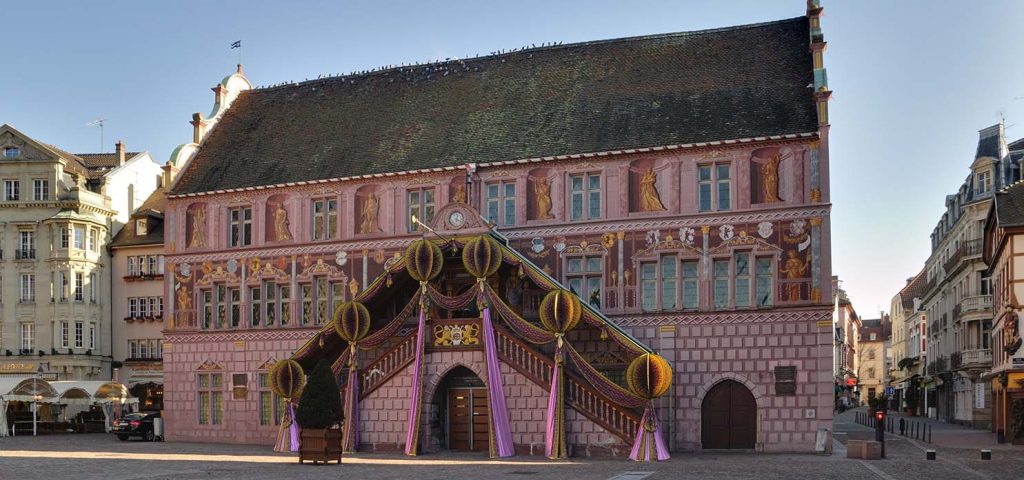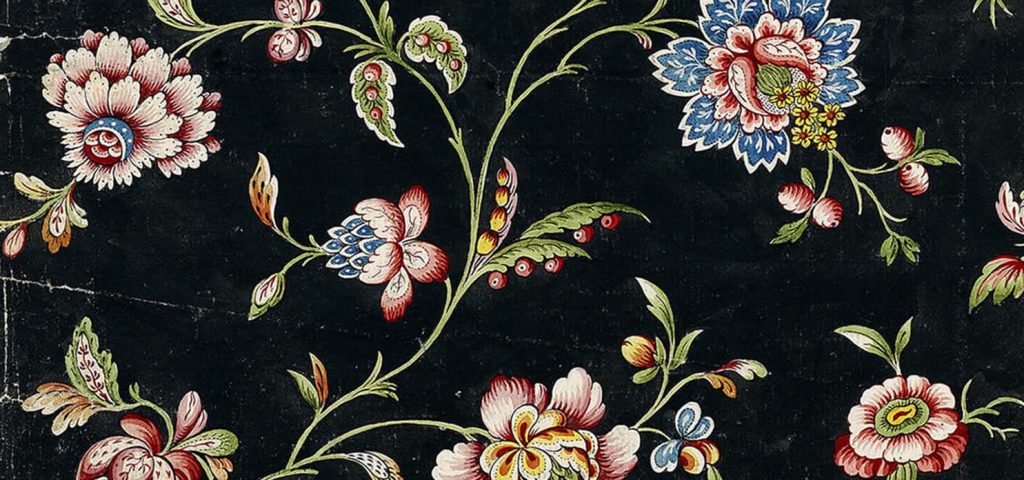I’ve had the privilege of exploring many cities around the world, each with its own unique charm and tales of the past. But there’s something truly captivating about wandering through the cobbled streets of an old town, where history whispers through the architecture, and every corner seems to hold a secret. That’s precisely the feeling I experienced when I embarked on a journey to Mulhouse, a picturesque town in the heart of Alsace, France.
Time Traveling in Mulhouse’s Old Town
I often find myself drawn to places that resonate with the past. Mulhouse, a charming town in the heart of Alsace, France, was no exception. Known locally as “La Cité,” the Old Town of Mulhouse is like a time capsule that whisks you away to bygone eras.
A Glimpse of Yesteryears
Stepping into Mulhouse’s Old Town felt like stepping into a beautifully preserved historical novel. The streets, adorned with narrow cobblestone pathways, were flanked by centuries-old half-timbered houses. These wooden structures, with their intricate designs and visible beams, seemed to whisper stories of generations long past.
As I wandered through these charming streets, I was enveloped in the warm scent of freshly baked bread wafting from the local boulangeries. The scent mingled with the earthy aroma of the cobblestones beneath my feet, creating a sensory experience that transported me back in time.
The Heart of the Old Town: Place de la Réunion
My journey through time began at the heart of the Old Town, Place de la Réunion. This vibrant square is the perfect embodiment of Mulhouse’s rich history. At its center stands the majestic Temple Saint-Étienne, an architectural masterpiece that pays homage to the town’s past. The temple’s neoclassical façade is a work of art, concealing an interior adorned with stunning stained glass windows.
As I entered the temple, I was greeted by a serene atmosphere, punctuated by the soft, colorful glow of sunlight filtering through the intricate glasswork. It was a moment of tranquility and reflection, a chance to appreciate the town’s historical and architectural heritage.
The square surrounding the temple was equally captivating. Locals and visitors alike gathered at the café terraces, sipping on their morning coffees and immersing themselves in the lively ambiance. It was a scene that seamlessly blended the old and the new, where the past met the present in perfect harmony.
A Journey Through Time and Space

One of the remarkable aspects of exploring Mulhouse’s Old Town is that you don’t need a meticulously planned itinerary. Instead, you can simply wander, allowing the town’s hidden gems to reveal themselves at every turn.
As I continued my journey, I stumbled upon the Hôtel de Ville, the Town Hall. This architectural marvel, adorned with intricate sculptures and a magnificent clock tower, felt like a portal to a different time. I couldn’t help but imagine the historical figures who had once gathered here, making decisions that shaped the town’s destiny.
Just a short walk away, I discovered the Medieval Garden, a hidden oasis amidst the bustling streets. This charming garden provided a peaceful retreat, with its lush greenery, bubbling fountains, and fragrant flowers. It was the ideal spot to take a leisurely break, savoring a baguette sandwich from a local boulangerie and watching the world go by.
Mulhouse’s Old Town, with its labyrinthine streets and unexpected treasures, truly captures the essence of time travel. It’s a place where the past and present coexist, where every corner tells a story, and where the spirit of history is palpable in the air.
Unveiling Mulhouse’s Artistic Treasures
While exploring Mulhouse Old Town, I discovered not only its historical gems but also its vibrant art and culture.Among the must-visit destinations in this charming quarter is the illustrious Musée Historique, a window to the town’s rich heritage and artistic heritage.
A Journey Through Time and Art
The Musée Historique, or Historical Museum, is a captivating establishment that seamlessly marries history and art. Stepping into this museum felt like embarking on a journey through time and creativity. Its extensive collection spans the ages, offering a captivating glimpse into Mulhouse’s multifaceted past.
As I entered the museum, I was immediately drawn to its impressive array of artifacts and artworks. Ancient relics, meticulously preserved, told stories of the town’s earliest days. It was as if I had been transported back in time, witnessing the birth and evolution of Mulhouse.
One of the museum’s standout features is its collection of intricate tapestries. These textile masterpieces are a testament to the artistry and craftsmanship of bygone eras. Each tapestry is a symphony of color and detail, depicting scenes and stories that once captivated the imaginations of generations.
The Art of Preservation
One aspect that struck me about the Musée Historique was its commitment to preservation. The museum’s curators have done an exceptional job of conserving not only the physical artifacts but also the essence of Mulhouse’s history and culture.
The lighting in the museum was expertly designed to accentuate the beauty of each exhibit. As I walked through the galleries, I couldn’t help but admire how the play of light and shadow added depth and dimension to the displays. It was a reminder that art and history are not static but dynamic, evolving with each new visitor who passes through.
A Vivid Portrait of Mulhouse
What impressed me most about the Musée Historique was its ability to paint a vivid and comprehensive portrait of Mulhouse. From its humble beginnings to its growth as a vibrant town, every facet of Mulhouse’s identity was on display.
The museum also offered insights into the town’s industrial heritage, showcasing the machinery and innovations that played a pivotal role in Mulhouse’s history. It was a reminder that art and culture are often intrinsically linked to industry and progress.
Time-Traveling with Cuisine
No exploration of an old town is complete without indulging in the local cuisine. In Mulhouse, that means embracing Alsace’s culinary heritage. I found myself at La Maison de la Tarte Flambée, a cozy restaurant renowned for its tarte flambée. These thin, crispy, and slightly charred Alsatian flatbreads are a culinary delight. I opted for a classic version topped with crème fraîche, onions, and lardons. Paired with a glass of regional Riesling, it was a taste of Alsace’s traditions.
Restaurant Au Vieux Mulhouse was my choice for dinner, where I savored choucroute garnie, another Alsace specialty. This hearty dish consists of sauerkraut, sausages, and smoked meats. The ambiance of the restaurant, with its timber-framed interior, made me feel like I’d stepped into a medieval feast.
A Tapestry of Colors: Exploring the Musée de l’Impression sur Étoffes
Amidst the historical charm of Mulhouse’s Old Town lies a hidden artistic gem that captures the essence of the region’s textile heritage—the enchanting Musée de l’Impression sur Étoffes. Housed within a magnificent 18th-century mansion, this museum is a testament to the creativity and craftsmanship that have woven the fabric of Mulhouse’s history.

A Textile Time Capsule
Entering the Musée de l’Impression sur Étoffes felt like stepping into a world where colors, patterns, and textures converged to tell a unique story. The museum’s setting in an elegant 18th-century mansion added an extra layer of charm to the experience. The moment I crossed the threshold, I was greeted by the rich aroma of antique textiles, an olfactory prelude to the visual feast that awaited.
As I wandered through the museum’s rooms, I was immediately struck by the vibrant fabrics that adorned the walls and displays. These were not just pieces of cloth; they were living canvases that showcased the artistry of generations of textile craftsmen. From intricate patterns that seemed to dance before my eyes to bold, striking designs that demanded attention, every piece told a tale of creativity and skill.
The Art of Textile Printing
At the heart of the Musée de l’Impression sur Étoffes lies the art of textile printing—a craft that has been integral to Mulhouse’s identity for centuries. The museum’s collection includes antique printing presses, some of which date back to the 18th century. These machines, with their intricate mechanisms, provided a glimpse into the painstaking process of transferring designs onto fabric.
One of the highlights of my visit was witnessing a live demonstration of textile printing. A skilled artisan deftly worked the printing press, carefully aligning the fabric and the engraved plate. With each press of the lever, vibrant ink was transferred to the cloth, bringing intricate patterns to life. It was a mesmerizing display of artistry and precision, and I couldn’t help but marvel at the dedication of those who had perfected this craft over the centuries.
A Celebration of Heritage
What struck me most about the Musée de l’Impression sur Étoffes was its role as a custodian of Mulhouse’s heritage. The museum not only preserves the tangible artifacts of textile history but also keeps alive the intangible heritage of creativity, innovation, and cultural identity.
The fabrics on display were not merely decorative; they were windows into the past. They told stories of fashion trends, social norms, and artistic movements of their respective eras. Each textile was a chapter in Mulhouse’s history book, and the museum allowed me to read and appreciate every page.
As I concluded my visit to the Musée de l’Impression sur Étoffes, I couldn’t help but feel a profound sense of appreciation for Mulhouse’s rich textile heritage. The museum had taken me on a journey through time, allowing me to witness the evolution of textile artistry and its enduring impact on the town.For anyone with an appreciation for art, craftsmanship, or cultural history, this museum is an absolute must-visit in Mulhouse.
Practical Information
- Temple Saint-Étienne: Open daily, free admission.
- Hôtel de Ville: Exterior can be admired at any time. Guided tours available.
- Medieval Garden: Open year-round, free admission.
- La Maison de la Tarte Flambée: Prices for tarte flambée start at €8.
- Restaurant Au Vieux Mulhouse: Main courses from €15-€30.
- Musée Historique: Open daily except Tuesdays, admission €5.
- Musée de l’Impression sur Étoffes: Open daily except Tuesdays, admission €7.
As the day drew to a close, I couldn’t help but feel a profound connection to the past and the people who had shaped Mulhouse’s Old Town. Each cobblestone, each timbered house, and each bite of tarte flambée told a story of resilience and creativity. Exploring Mulhouse’s Old Town was not just a journey through history; it was a glimpse into the soul of Alsace.
If you find yourself in Alsace, make sure to take a stroll through Mulhouse’s Old Town. It’s a place where history dances with the present, and every moment feels like a page turned in a living storybook.
